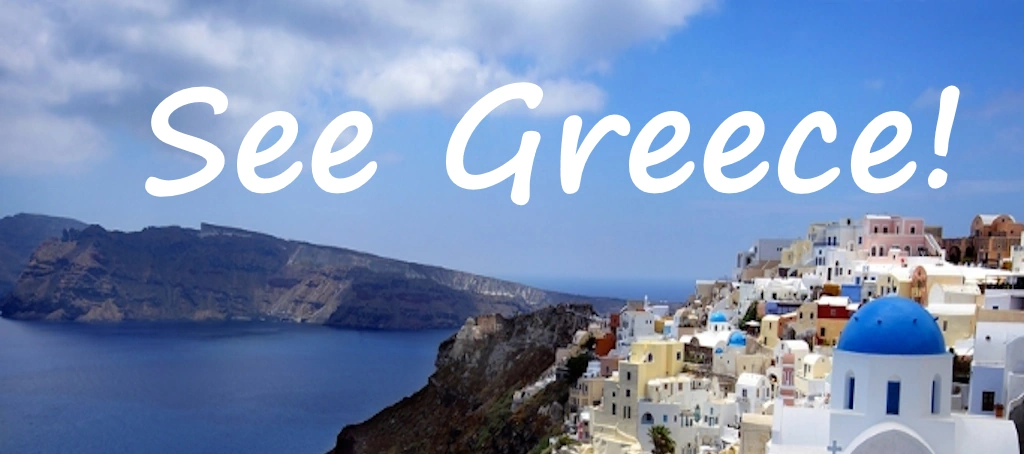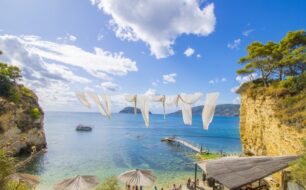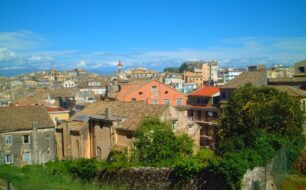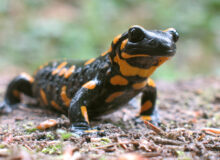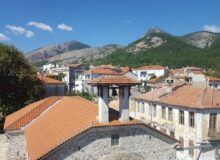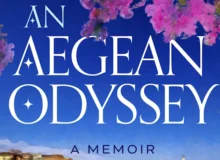See Greece offers this introduction to the Ionian Islands, with a brief history, a list of main islands, their climate & geography, & main tourist attractions.

The Ionian Islands: Greece’s Emerald Paradise
Introduction to the Ionian Islands
The Ionian Islands, located off the west coast of mainland Greece, are a stunning archipelago known for their lush greenery, turquoise waters, and Venetian-inspired architecture. Unlike the arid Cyclades, these islands boast verdant landscapes, olive groves, and cypress trees, earning them the nickname “the Emerald Isles.” With a rich history influenced by Venetian, French, and British rule, the Ionian Islands offer a unique blend of Greek and Western European culture.
List of the Ionian Islands (Alphabetical Order)
The seven principal islands are:
1. Corfu (Kerkyra) – The northernmost and most cosmopolitan, with Venetian architecture and vibrant nightlife.
2. Ithaca (Ithaki) – Known for its Homeric legends and tranquil villages.
3. Kefalonia (Cephalonia) – The largest island, famous for Myrtos Beach and Melissani Cave.
4. Kythira – Located south of the Peloponnese, with a mix of Ionian and Cretan influences.
5. Lefkas (Lefkada) – Connected to the mainland by a bridge, known for windsurfing and stunning beaches.
6. Paxos (Paxi) – A tiny island with crystal-clear waters and olive groves.
7. Zakynthos (Zante) – Home to the iconic Shipwreck Beach (Navagio) and vibrant nightlife.
Smaller Notable Islets:
– Antipaxos (near Paxos) – Tiny paradise with turquoise waters.
– Meganisi (near Lefkada) – A quiet escape with secluded coves.
– Othonoi (northwest of Corfu) – The westernmost point of Greece.
History of the Ionian Islands
Ancient and Byzantine Periods
The Ionian Islands have been inhabited since prehistoric times, with significant settlements during the Mycenaean and Classical eras. Odysseus, the legendary hero of Homer’s Odyssey, was said to have ruled Ithaca. During the Byzantine period, the islands were part of the Eastern Roman Empire but faced frequent pirate raids.

Venetian Rule (14th–18th Century)
The Venetians took control in the 14th century, leaving a lasting cultural and architectural legacy. Corfu (Kerkyra) became a major naval stronghold, resisting Ottoman sieges in 1537 and 1716. The Venetian influence is still visible in the islands’ fortresses, music, and cuisine.
French and British Rule (1797–1864)
After Napoleon dissolved the Venetian Republic, the islands briefly fell under French rule before becoming a British protectorate (1815–1864). The British introduced infrastructure, including roads and schools, but Greek nationalism grew, leading to the islands’ reunification with Greece in 1864.
Modern Era
Today, the Ionian Islands are among Greece’s top tourist destinations, known for their scenic beauty, historic sites, and vibrant culture. Corfu and Zakynthos are particularly popular, while Kefalonia and Lefkada attract visitors with their dramatic coastlines.

Geography of the Ionian Islands
The Ionian Islands consist of seven main islands and several smaller islets, stretching from Albania in the north to the Peloponnese in the south. The islands are characterized by:
– Lush vegetation (olive trees, cypresses, pine forests)
– Steep cliffs and sandy beaches (Navagio Beach in Zakynthos, Porto Katsiki in Lefkada)
– Deep blue waters with excellent visibility for snorkeling and diving
– Mountainous interiors (Mount Ainos in Kefalonia is a national park)
The islands are easily accessible from mainland Greece via bridges (Lefkada) or short ferry rides.

Climate of the Ionian Islands
The Ionian Islands enjoy a Mediterranean climate with mild, wet winters and warm, dry summers:
– Summer (June–September): 25–35°C (77–95°F), ideal for beach holidays.
– Spring (April–May) & Autumn (October–November): Pleasant temperatures (18–25°C / 64–77°F), perfect for hiking and sightseeing.
– Winter (December–March): Rainier and cooler (10–15°C / 50–59°F), with occasional storms.
Unlike the Cyclades, the Ionian Islands receive more rainfall, contributing to their green landscapes.

Tourist Highlights of the Ionian Islands
Beaches

– Navagio Beach (Zakynthos) – A world-famous shipwreck cove with sheer cliffs.
– Myrtos Beach (Kefalonia) – Dramatic white pebbles and deep blue waters.
– Porto Katsiki (Lefkada) – A breathtaking cliff-backed beach.
– Canal d’Amour (Corfu) – A unique sandstone channel with turquoise waters.
Cultural & Historical Sites
– Old Fortress & Liston Promenade (Corfu) – Venetian-era landmarks.
– Assos Village & Castle (Kefalonia) – A picturesque fortified town.
– Monastery of Panagia Hozoviotissa (Kythira) – A cliffside Byzantine monastery.
– Ancient Alalcomenae (Ithaca) – Ruins linked to Odysseus’ kingdom.
Activities
– Sailing & Yachting – The calm Ionian Sea is perfect for sailing.
– Hiking in Mount Ainos (Kefalonia) – A national park with rare fir trees.
– Windsurfing in Vassiliki (Lefkada) – One of Europe’s best windsurfing spots.
– Turtle Spotting in Laganas Bay (Zakynthos) – Home to endangered loggerhead sea turtles.
Conclusion
The Ionian Islands offer a perfect mix of natural beauty, rich history, and vibrant culture. Whether you seek the cosmopolitan charm of Corfu, the legendary tranquility of Ithaca, or the breathtaking beaches of Zakynthos and Kefalonia, this island group promises an unforgettable Greek holiday. With their Venetian heritage, lush landscapes, and crystal-clear waters, the Ionian Islands stand out as one of Greece’s most enchanting destinations.
